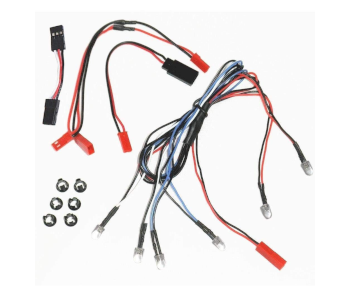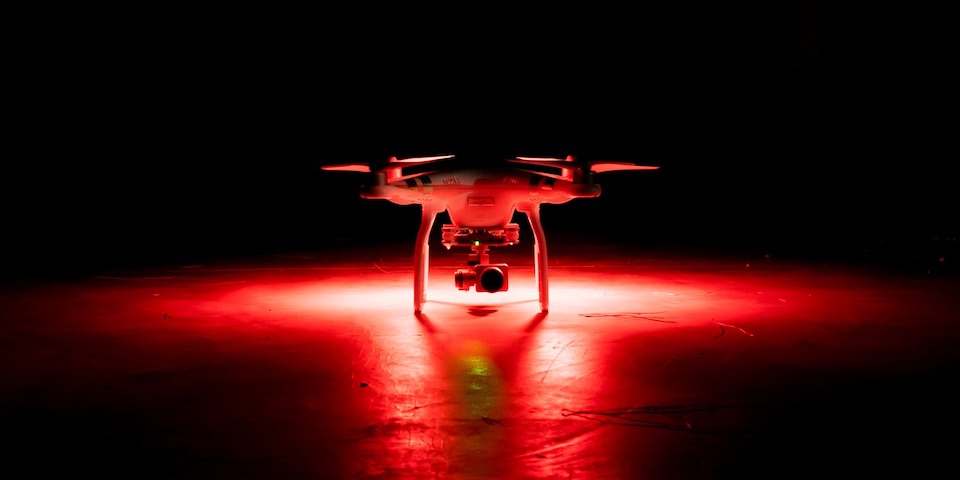How to Add LED Light Kits to Your RC Toy
Radio controlled models have caught the world’s imagination in recent years. They’ve even drawn in folks who would not usually bother, and the reasons are simple. Today’s RC cars, trucks, boats, airplanes, and other robots are miles apart from those of yesteryear. That includes RC kits where people build or customize their models with aftermarket parts and RC LED lights.
LED Lighting 101
Multi-colored LED lights add to the WOW factor of any model. They’re more practical, affordable, and efficient than the alternatives too. Don’t even think about tiny incandescent, halogen, or CFL bulbs.
The reasons to consider LED lights for your model are clear:
- LEDs rated lifespan is up to 50000 hours
- That’s 50 times longer than incandescent bulbs
- 20-25 times longer than halogens
- 8-10 times longer than a typical CFL
What does all this mean in layman’s terms? Well, LED lights can easily last for years, outliving the life of the model you first used them on. They’re also the eco-friendly choice of lighting.
Failure to Plan is Planning to Fail
Okay, first things first. You can’t just buy RC LED lights and stick them willy-nilly on any model. Nothing here is overly complicated, but you need to plan all the same. It’s not possible to give a systematic guide here. That’s because every model is different as are the needs of the hobbyist. I can, however, provide direction on what you need to prepare for your project.
Here are the four basic requirements for a typical RC LED light set up:
- LEDs of your choice
- The power supply
- Resistors
- Solder and soldering iron (not always necessary)
Let’s look at each of the above in turn starting with the LED lights.
#1 The LEDs or Light-Emitting Diodes
You’re buying LEDs for the first time, or you’re swapping the ones your model already has. You must decide on the choice of LEDs before you buy anything. Not only do you want them to look right, but they must fit too. Let’s take an RC truck as an example. A typical setup would include ultra-bright white headlights and red tail lights. You may also want blue ground-facing LEDs for night crawling.
The point is LEDs come in various sizes, brightness, colors, and beam patterns. The voltage (electric force) can vary as well. Make sure you note the voltage of the LEDs so that you don’t send them too much current. A good LED light kit comes with simple instructions on how best to install them.
RC LED lights are typically 3mm, 5mm, and 10mm sizes. The colors include white, red, green, blue, and amber. Check for any color flashing LEDs you need for the project. There are brands that sell universal light sets that list all compatible models on the product diription.
A final point to note is that not all LED lights are equal when it comes to durability. Strength is especially crucial if your model races, jumps, flips, and is prone to crashes. If in doubt, check the resilience of the LEDs from user reviews or ask at an online RC forum.
Below is a typical example of an LED Kit for Traxxas Redcat Models:
BASTENS RC Car Truck 6 LED body lights kit

You can view the product description to get a good idea of how they work. There are illustrations to help guide users as well as written details. Here’s roughly how they describe this RC LED light kit:
In the box of a BASTENS RC 6 LED body kit:
- 2 white LED headlights, 2 red LED taillights, 2 blue LED lights
- 6 LED holders for ¼” hole
- JST connector and a servo connector (male/female)
The company explains how to connect the LEDs to the model and secure the wires. It’s all simple stuff once you understand the basics. It’s a similar process with any RC model. The only difference is the type of lights used, where to secure them, and the power supply (see section #2 below).
Here are a few examples of RC LED lighting kits:
Generic LED Lighting Kit for Cars and Trucks. Models 1:10 scale or smaller. The colors are three white, two orange, and one red LED. The kit also contains a
control box, a receiver, and a connection cable.
12-LED Flashing Light Lamp System for RC Trucks & RC Cars 1/10th or smaller. For around 11 dollars you get 12 multi-color Flashing LEDs: There are six white, two blue, two yellow, and two red. Also in the box are 12 LED holders, a power connection cable, and a control connection cable.
Low-price LED Flashing Light System. This super cheap kit is for RC airplanes, cars, and anything else it might suit. It contains eight red and white LEDs, four that flash and four that stay on.
Point to note: You can also design RC LED light sets from scratch to create unique configurations.
#2 The Power Supply for RC LED Lights
Decide on your power source. The voltage dictates the LED wiring when it comes to the resistors you use (see next section). There are two options here. One is to power the lights directly from the model’s primary energy supply. The other is to use separate batteries. Note that reputable RC kits have suggestions on how to power the LEDs on various models.
Battery power is typically a 6V or 9V supply. You may need to find room to put an external power supply and switch on the model. You must decide how to keep the batteries in place too. Some people tape them down, but that depends on your model type, size, and design. It’s not possible to generalize here. It’s easier to place lipo batteries inside of cars and trucks than it is other types of RC models.
Point to note: You can buy LED lights that come prewired to a battery terminal.
Think about the location of the LEDs and where the internal wiring can go. These are small yet significant points. Newbies often buy LEDs lights only to find that they’re the wrong shape or size to fit. Either that or there’s no room for the wiring.
#3 The Critical Role of Resistors
Most RC LED kits will have the correct resistors preinstalled for the power source. You can also buy them separately if you’re creating a unique setup. Either way, it’s good to understand the critical role of these tiny components. The best way to explain this is to start with the LEDs.
An LED needs an electric current to pass through it to emit light. What the resistor does is limit (control) that current, so the LED receives the right flow (safe value). An LED without this precise control is at risk of burning, and that’s why we use resistors. The proper name for these components is ballast resistors. Ohm’s law and Kirchhoff’s circuit laws calculate the resistance of a ballast resistor.
It doesn’t have to be complicated, and it starts by knowing three things:
- The output voltage of the battery
- The LED voltage aka forward voltage or just V
- The LED current aka forward current, listed as mA or in milliamps
All batteries should have the output voltage printed somewhere. Likewise, the LED voltage and LED current should be on its packaging. That’s all you need to know at the basic level. The easiest way to determine the proper resistors for your custom LED setup is to then use an online calculator.
The Right Tools for the Job
I’ve made a list of everything you need for installing an RC LED light setup for any model. You won’t need everything on this list if you buy a kit of course.
- LEDs of the right size, colors, effects, and brightness
- Resistors if building a light kit from scratch
- Battery holder if using an external power source
- Switch to turn LEDs on and off
- Wires if building a light kid from scratch
- Drill and drill bits if you need to make new holes for the LEDs
- Small pair plier cutters
- Hot glue gun
- Solder and an adjustable-temperature soldering iron
It’s better to buy an Electronics Kit like this one if you need the optional tools. You may want to invest in a high-quality soldering iron if building RC models is to be a long-term pastime. The SEALODY Digital Soldering Station is an excellent choice though there are others.
Summing Up
The RC model business is booming. It has seen massive technological advancements in the past few years, and that’s attracting people from all walks of life. It’s a hobby that can be entertaining, useful, profitable, and educational. It all depends on your needs and expectations. Adding LED lights to RC products adds a wow factor whether you’re selling models or just showing off.

